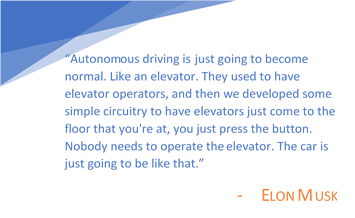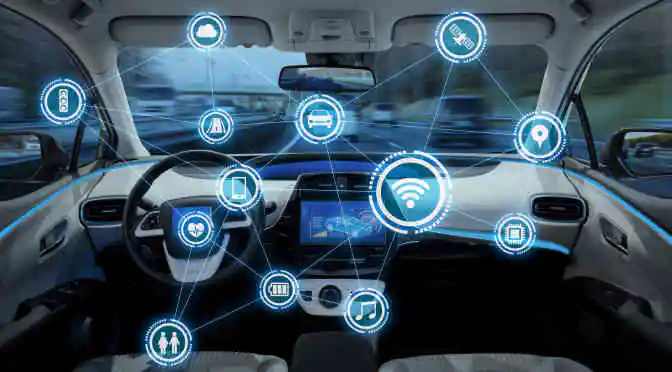One of the early adopters of digitalization, investments in the automotive industry will exceed $80 billion by 2020. Herein, the provision of digitally enhanced experiences for customers is a major reason for this rise in investment. Our analysts break down the hype and bring you the top five digital automotive trends that are gaining traction right now!
Read: Car Sharing, Robo-Taxis, Self-Driving Vehicles: Urban Mobility Revolution Has Just Begun!
1) Autonomous driving technology
From manual driving to robo-taxis, the automotive industry has accomplished a major technological leap. Autonomous driving has not only redefined urban mobility, but also revamped the way in which vehicles are manufactured. The onus behind automated vehicles is to reduce the number of road accidents and manage urban traffic seamlessly.
 While “fully automated driving” is still a while away, assisted driving is gradually becoming more mainstream. Along with reducing accidents, industry experts predict that autonomous driving will also lower insurance costs in the next 5 years.
While “fully automated driving” is still a while away, assisted driving is gradually becoming more mainstream. Along with reducing accidents, industry experts predict that autonomous driving will also lower insurance costs in the next 5 years.
Read: Automation in the Automotive Industry: Major Trends in 2018
2) Mobility-as-a-Service aka MaaS
One of the latest revolutions in mobility, MaaS employs a digital platform to integrate end-to-end trip planning, booking, electronic ticketing, and payment services across all modes of transportation, public or private. The best examples of this are Lyft and Uber. These two startups have disrupted the current landscape of the automotive industry by eliminating costs involved in the purchase, maintenance, licensing, and registration of the vehicle. Mobility-as-a-service thus enables major savings for consumers.
Taking a cue from this trend, automotive stalwarts like Fiat and Volkswagen have also made investments in this technological innovation. While Fiat is in talks with Google, Volkswagen is working on its own ride-sharing app.
3) Digital markets for cars
From being hounded by sales representatives and making back and forth negotiations, to getting a detailed understanding of every minute aspect of the vehicle– the car purchasing process has improved dramatically. Aside from online sources like Edmunds and TrueCar, even the brick-and-mortar showrooms have transformed into digital marketplaces with cutting edge virtual reality capabilities.
Virtual reality affords a 360-degree view of the vehicle, enabling customers to get a realistic feel of the car without inspecting it physically. For instance, Audi has pioneered the use of virtual showrooms with giant video screens that display the choicest information about the selected vehicle and the relevant buying information.
Given that a vast majority of customers conduct major online research before buying vehicles, brands have started offering cars and related accessories directly through their respective websites. Intuitive and smart, right?
Read: Automotive Telematics – Safe Road to the Future of the Auto Industry
4) Connected supply chain
Stakeholders in the automotive industry have understood that personalization of the buyer’s experience is key to building a loyal customer base and invite referral business. This is the primary reason why the automotive industry has adopted a decentralized approach towards the supply chain. Connected supply chain collects data that is further employed to effectively engage the consumers, accelerate the design process, and reduce manufacturing and delivery costs.
5) Predictive maintenance
Rather than depending on legacy systems and good ole’ guess work to schedule car maintenance cycles, advanced self-diagnostic systems have pioneered the element of ‘predictive maintenance’ and totally reworked the aftersales aspect in the global automotive industry. These intuitive diagnostic systems alert drivers about any and all problems related to the vehicle, thereby reducing the chances of recall and mechanical failures associated with the car.
Read: Know How Disruptive Open Source Software: Speeding up the Development of Cars
The tyre monitoring program from Michelin, for instance, uses telematics and predictive analysis to provide companies with real-time performance analysis and the wear data of specific tyres on individual trucks.
Similarly, through digitalization, remote servicing has become a possibility. Now, owners need not leave their driveways for routine car services. Instead, through the clever integration of technology, things like knobs and gauges can be replaced with a digital interface. Thanks to the dynamics of demand-and-supply, expect these fully automated systems to be the norm in the automotive industry, sooner than later.



